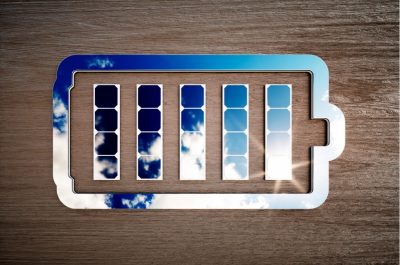A NEM Christmas Carol – Noel or No Way?
By all accounts the National Electricity Market (NEM) has been a success, it has delivered electricity to south and eastern Australia, and Tasmania, for almost 15 years, supported by the Australian Energy Market Agreement (AEMA). However, recent announcements by several states, proposing state-based approaches to energy security, make the national coordination and AEMA look increasingly redundant.
NEM Past – ‘O Tidings of Comfort and Joy’
There was a time before the NEM.
Before the 1990s, electricity generation, transport via networks and retail was entirely the responsibility of each state or local government bodies.
Each state operated its own regulatory, market and settlement processes and ensured their electricity system remained stable.
There was limited interconnection between jurisdictions, with each state operating as an island.
Eventually the Snowy Hydro Scheme drove interconnection between New South Wales and Victoria, and the Heywood Interconnector between South Australia and Victoria was commissioned in 1988. By 1990 South Australia, Victoria and NSW were interconnected electrically, setting the framework for the NEM as we know it today.
Concerns had been raised that the state-based monopoly electricity companies were inefficient and charging too much for electricity and, in 1991, the Australian Government’s Productivity Commission recommended the promotion of competition within the electricity industry[1]. This, along with the Hilmer Report in 1993[2], prompted the development of the NEM.
It took a few years to create the NEM, which after a few state-based trials started operation in 1998 and NEMMCO – a national electricity market management company – was created to oversee it. With the signing of the AEMA in 2004, the market bodies we have today emerged: The Australian Energy Regulator (AER), the Australian Energy Market Commission (AEMC) and NEMMCO transitioned to Australian Energy Market Operator (AEMO) in 2009.
NEM Present – Do You Hear What I Hear?
The NEM, while not born in a manger, came into being for the mainland eastern states just before Christmas 1998. Tasmania joined in 2006 with the completion of the Basslink interconnector which allowed the trade of electricity between Tasmania and the NEM.
The AEMA was signed in 2004 and applies to all Australia’s states and territories. The AEMA covers the National Electricity Objective (NEO) and electricity industry governance, regulation, planning, incorporation of demand side management and reducing greenhouse gas emissions. In particular, its objectives included strengthening the quality and ‘national character’ of energy market governance to improve the climate for investment.
Interconnection allows electricity to travel through the NEM, ensuring generation in one state can support another and enabling customers to have reliable and secure electricity at lowest cost.
Arguably, the NEM and AEMA have supported good reliability and lower wholesale prices. The wholesale cost of electricity, while varying over the past 10 years, has remained largely flat at $60/ MWh[3]. Electricity retail prices, however, have increased throughout the life of the NEM.
With the retirement of large coal generators, the increase in renewable generation, both large and small, and the lack of a federal emissions target, state governments are becoming increasingly keen to ensure they have access to reliable and secure generation on an individual state basis, while meeting their specific climate change mitigation goals.
This perceived need to ‘go it alone’ has been supported by several issues, including minimum demand concerns and the publication of AEMO’s Renewable Integration Study[4], which lays bare the risks on a state-by-state basis.
With the South Australian Government taking unilateral steps to protect its electricity system and customers from these risks, the New South Wales Government has followed with an ambitious plan for integrating renewables with Renewable Energy Zones (REZ) to meet its targets. Victoria has announced both a 300 MW battery and REZ, with Queensland also supporting the development of REZs.
With all this state action, the NEM and AEMA look increasingly fragile and it’s difficult to see how the future might unfold. In this environment, we risk leaving customers and investors alike seeking to peer through the window into the warm and welcoming place we all want to be, without assurance about how we will get there.
NEM Future – When we were gone astray
There have been several calls to renegotiate the AEMA, with the Chair of the ESB suggesting in late November 2020:
“The one recommendation in the Finkel Review that we haven’t made any progress on really is that governments review or revise the national energy market agreement. I think now would be a good time to do that.”[5]
Perhaps the AEMA will be reworked in a way that can accommodate the individual approaches of the states, but it is difficult to see how.
So, what might the future NEM look like?
In this extreme case, each state could “secede” from the NEM, returning to increasingly state-based system operation. Under this future, the current transmission network services providers (TNSPs) could conceivably take their existing control rooms and morph into transmission system operators (TSO), working with the distribution network service providers (DNSPs), to ensure that the system in their region remains secure and stable.
Each state could operate its own market and settlement process. This could mean the creation of a new settlement body, or this could be subcontracted to the current market operator, AEMO. The market would likely to be operated by the TSO, charged with taking bids, scheduling and dispatching generators and maintaining system stability.
Interconnectors would be vehicles to trade electricity with neighbouring states, buying at times of need and selling at times of surplus, but always meeting the aims of the local population and government first. There would be no need for further interconnection, unless there was an overwhelming or insoluble surplus or short fall. Planning is already the responsibility of the networks but would incorporate local aspirations.
There would be no need for a national market and no need for a national market operator. Retail would remain much as it is now, and regulations would still be set nationally but be increasingly prey to state-by-state adjustment. This would mean over time that national regulation will become diffuse, making life complicated for retailers, potential network operators or their competitors, and those wishing to connect on nationally consistent rules, although some of these approaches are not uniform today.
The national component could be limited to ensuring the prices consumers pay are fair – but with the added difficulty of needing to take account of a myriad of jurisdiction-specific costs, obligations and approaches.
NEM Future may look a lot like NEM Past, with some similar characteristics. The greater level of state control would mean governments directing investment to ensure emissions come down and the lights stay on. But just as NEM Past was accused of being inefficient and charging too much for electricity, it’s hard to see how shifting generation risk onto governments, paid for by electricity customers, will deliver least cost outcomes.
In A Christmas Carol, Scrooge, by meeting the past, present and future, realises he needs to change his approach, and invests in a giant turkey for Tiny Tim and family. Only time will tell if states can go their own way while keeping their electricity systems secure and low cost and whether, in the end, the NEM is a complete turkey.
[1] https://www.pc.gov.au/inquiries/completed/energy-generation
[2] http://ncp.ncc.gov.au/docs/National%20Competition%20Policy%20Review%20report,%20The%20Hilmer%20Report,%20August%201993.pdf
[3] http://www.coagenergycouncil.gov.au/sites/prod.energycouncil/files/publications/documents/The%20Health%20of%20the%20National%20Electricity%20Market%20V01.pdf
[4] https://www.aemo.com.au/-/media/files/major-publications/ris/2020/renewable-integration-study-stage-1.pdf
[5] https://www.afr.com/policy/energy-and-climate/calm-down-and-power-on-20201124-p56hfj


